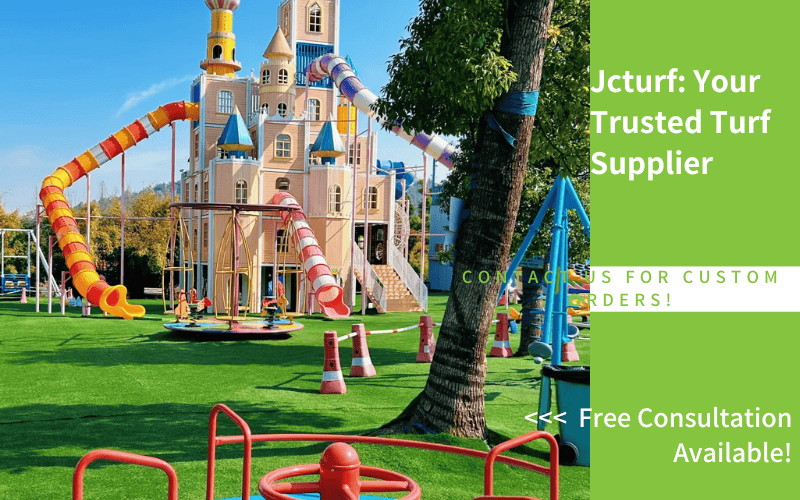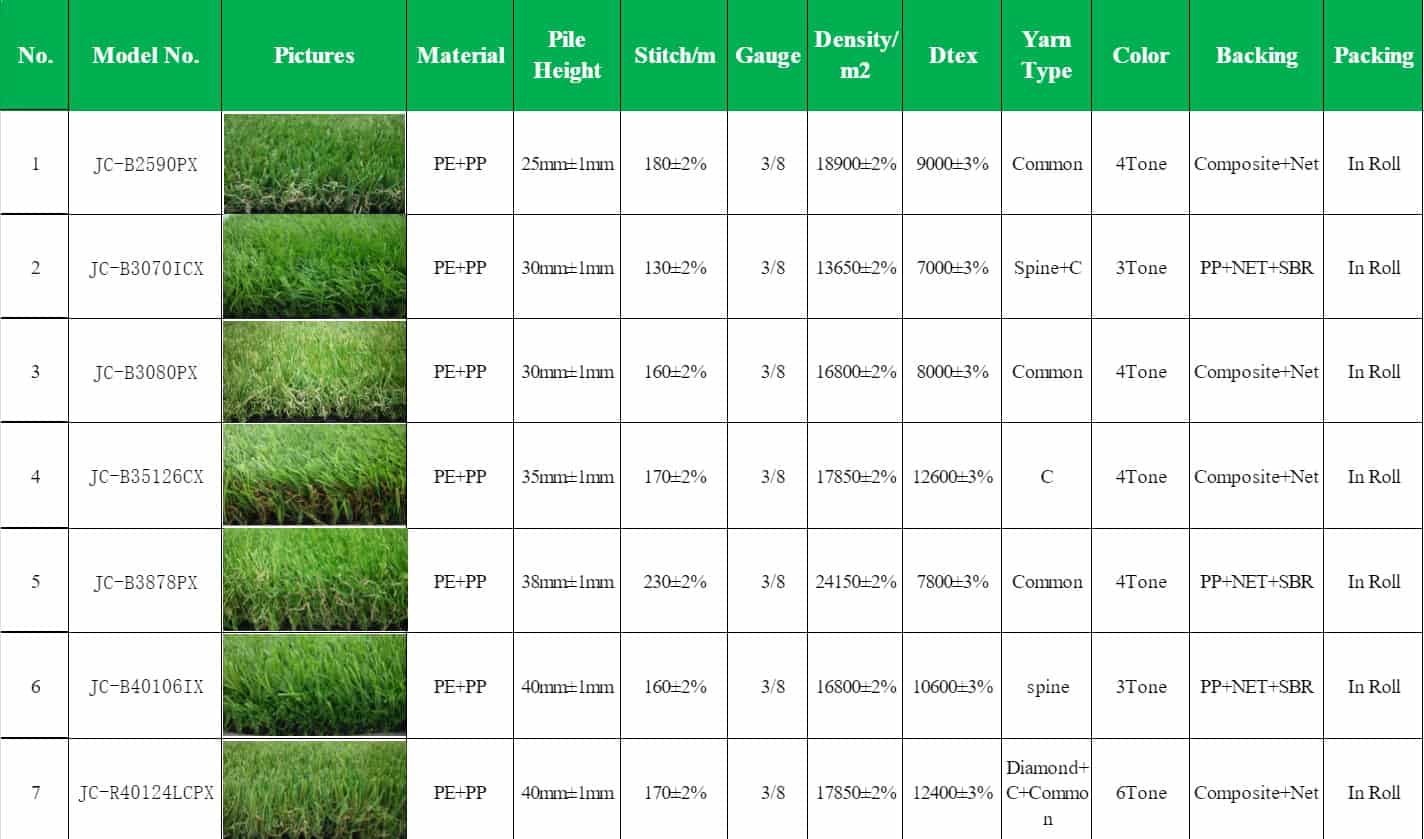If you’re planning a playground turf installation and want to get it right the first time, this step-by-step guide has you covered. We’ll walk you through the entire process—from clearing and leveling the ground to laying, trimming, and securing the turf—so you can create a clean, safe, and long-lasting surface. You’ll also learn what tools and materials you need, how to avoid common mistakes, when to DIY or call a pro, and how to keep your turf in great shape with simple maintenance. Whether you’re doing it yourself or supervising the job, this guide will help you move forward with clarity and confidence.
Step 1: Gather the Tools and Materials Needed
Before you begin your playground turf installation, it’s essential to gather all the tools and materials you’ll need. Having everything ready helps avoid mid-project delays and ensures each step goes smoothly.
Here’s a complete checklist in the order you’ll use them:
| Tool / Material | Purpose |
| Measuring tape and chalk line | For accurate layout and straight edge alignment |
| Shovel and rake | To clear the existing surface and level the ground |
| Plate compactor or hand tamper | To compact the base and create a stable foundation |
| Landscape fabric | To block weed growth and separate the base from the soil |
| Crushed stone or decomposed granite | Used to form a strong, well-draining base layer |
| Turf padding (optional) | Adds cushioning and increases safety under the turf |
| Turf cutter or utility knife | For trimming turf pieces to fit your layout precisely |
| Seaming tape and seam adhesive | To securely join multiple turf sections |
| Turf adhesive, nails, or staples | For fixing the turf in place at the edges and seams |
| Infill material | Supports turf blades and provides shock absorption |
| Push broom or power brush | To evenly distribute infill and lift the turf blades at the end |
Double-check your list before starting. Being fully prepared makes the entire installation faster and easier.
Step 2: Clear the Existing Surface
Before you can install playground turf, the ground must be completely cleared. This means removing any existing grass, soil, gravel, mulch, or old synthetic surfaces. Don’t skip this step—it’s the foundation of the entire project.
Use a shovel or turf cutter to dig down a few inches and remove everything until you reach bare, compactable soil. Make sure the area is free of roots, large rocks, or uneven patches. A clean surface gives you the stability you’ll need for the turf to stay flat, safe, and long-lasting.
Step 3: Level and Compact the Ground
After clearing the area, you need to level and compact the ground to create a stable foundation. This step ensures your turf won’t shift, sink, or wrinkle over time.
Use a rake to even out the surface, filling in low spots and removing small bumps. Then use a plate compactor or hand tamper to compress the soil until it’s firm underfoot. If the soil is too dry, lightly moisten it to help it compact better. Walk the area when finished—there should be no soft spots or loose patches. A smooth, compacted base is key to a long-lasting playground turf installation.
Step 4: Build a Solid Base Layer
To create a strong foundation for your playground turf, you’ll need to build a compacted base layer using crushed stone or decomposed granite. Spread the material evenly over the area, aiming for a depth of about 2 to 4 inches. Use a plate compactor to compress the base until it feels firm and stable underfoot.
A proper base not only supports the turf but also improves drainage. If your yard tends to collect water—or the original surface is concrete—consider adding a drainage layer below the stone, such as a drain mat or perforated pipe. This helps prevent water buildup and keeps the turf dry and safe.
Step 5: Install Turf Padding (Optional)
If you want extra safety for children, especially on playgrounds with climbing structures or frequent falls, consider adding a layer of turf padding beneath the grass. This soft underlayment helps absorb impact and reduces the risk of injury.
To install it, roll out the padding directly on top of the compacted base. Make sure the pieces are laid flat with no overlaps, and cut them to fit edges or curves. You can secure the padding with landscape staples to keep it in place. While not required, a good shock pad adds comfort and peace of mind—especially for high-traffic or public areas.
Step 6: Lay Out the Artificial Turf
Once your base is ready, it’s time to lay out the artificial turf. Unroll each piece over the area and let it sit in the sun for at least an hour. This helps relax any wrinkles or folds caused by being tightly rolled in packaging.
Make sure all turf rolls are facing the same direction—grass blades have a visible grain, and misalignment can make seams stand out. Position the pieces so they slightly overlap the edges; you’ll trim them later for a precise fit. At this stage, focus on getting everything roughly in place and aligned correctly before moving on.
Step 7: Trim the Edges for a Perfect Fit
Once the turf is laid out, you’ll need to trim the edges to match the shape of your play area. Use a sharp utility knife and start from the center, working outward toward the borders. Keep the blade tight against any hard edge—like a wall, concrete border, or landscape timber—for a clean, snug fit.
Take your time around curves, corners, or poles. Make small cuts and adjust as needed to avoid gaps or wrinkles. Think of it like cutting carpet: precision matters. Once trimmed, the turf should sit neatly in place, with no bunching or overlap.
Step 8: Secure the Turf to the Ground
Now that your turf is trimmed to fit, it’s time to secure it in place. You can use landscaping nails, turf staples, or outdoor adhesive depending on your base material. Start along the edges and work your way in, pressing the turf down firmly as you go.
Space nails or staples every 4 to 6 inches along the perimeter and every 12 to 18 inches in the center. Make sure seams are tight and edges are fully pinned—loose spots can cause wrinkles or lifting over time. For extra hold on concrete or hard surfaces, use turf glue in addition to fasteners.
Step 9: Apply the Infill Material
Infill gives your playground turf the support and cushioning it needs. It helps blades stay upright, adds shock absorption, and improves overall durability. Common infill types include silica sand and rubber granules.
Use a drop spreader or shovel to apply the infill evenly across the turf surface. Start with a thin layer and work in sections. After spreading, use a stiff broom or power brush to sweep the infill down into the turf fibers. Repeat the process if needed until the blades stand up straight and feel cushioned underfoot.
Step 10: Final Grooming and Inspection
Before you call the job done, take time for final grooming and inspection. Start by brushing the turf with a stiff broom or power brush to lift the blades and evenly spread the infill. This gives your turf a clean, upright appearance.
Next, walk the entire area. Check for any loose edges, visible seams, or missed spots in the infill. Make sure all tools, excess turf scraps, and debris are cleared away. A careful final check ensures your playground turf not only looks great but stays safe and secure for long-term use.
Common Playground Turf Installation Mistakes to Avoid
Even small mistakes can lead to turf problems later. Here are some to watch out for:
- Skipping ground compaction makes the turf surface uneven and unstable
- Laying turf without a proper base often causes poor drainage and shifting
- Misaligned turf blades make seams look obvious and unprofessional
- Using too little infill leads to flat grass and faster wear
- Weak or loose seam bonding can cause gaps between turf rolls
- Forgetting to brush the turf leaves blades matted and infill uneven
Avoid these common errors to get a cleaner, longer-lasting installation.
Should You DIY or Hire a Pro?
Installing playground turf yourself can save money, especially for small, simple areas. But if you’re working with slopes, large spaces, or safety standards for public play zones, hiring a professional is worth considering. Pros have the right tools, materials, and experience to get it done faster—and without costly mistakes.
When to DIY:
- The area is small and flat with easy access
- You already own or can rent basic tools like a compactor and utility knife
- The turf won’t be used in public or high-safety environments
- You’re comfortable following step-by-step instructions and working outdoors
When to Hire a Professional:
- The project involves slopes, curves, or large open spaces
- You need to meet specific safety standards (e.g. for schools or public parks)
- You want a polished, seamless finish without trial and error
- You don’t have time or prefer to avoid handling heavy labor
Basic Maintenance Tips After Playground Turf Installation
Artificial turf requires only light care, but a few simple habits can help it stay in top shape:
- Rinse the surface with water to remove dust, dirt, or pet waste
- Brush the turf blades regularly to keep them standing upright
- Check edges and seams for any signs of lifting or movement
- Remove leaves, twigs, and debris to prevent buildup
- Avoid placing hot objects or heavy furniture on the turf
Just a few minutes every couple of weeks can go a long way.
You’re Ready to Build Your Playground Turf
You’ve just learned everything you need to install playground turf with confidence. Whether you do it yourself or bring in help, the steps are clear, the tools are simple, and the results can be great. Take it one step at a time—and enjoy building a space that’s safe, clean, and fun to use.


